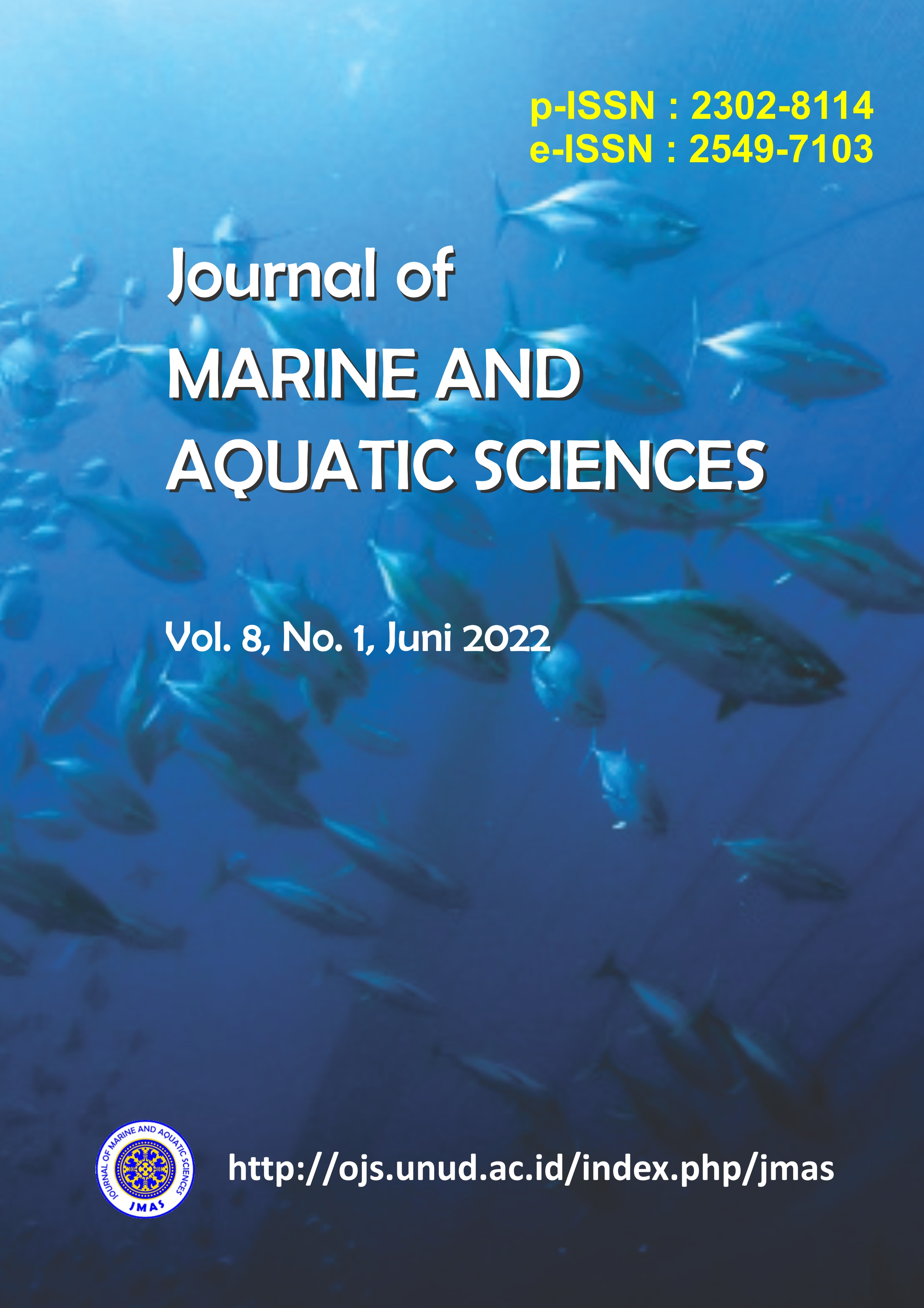Komposisi dan biodiversitas padang lamun pada daerah konservasi dan non-konservasi di kawasan Sunda Kecil, Indonesia
Abstract
Seagrass is one of the most productive plants in the marine ecosystems. Seagrass meadows provide many ecosystems services for marine organisms, yet there is growing evidence that seagrasses are experiencing declines globally due to anthropogenic threats. Although the study of seagrass in Indonesia has been widely caried out, Bali and Lombok have received little attention. Our study aimed to investigates the biodiversity of seagrass beds among different meadows characteristics in Bali and Lombok. This study was conducted at conservation area and non conservation area in Bali and Lombok, which were consists of total 8 sites. A total of 9 seagrass species were identified in this study, where 8 species found in Bali, both in conservation and non-conservation area, while in Lombok only 5 species found in conservation area and 6 species in non-conservation area. Most common species that found in this study were Enhalus acoroides, Cymodocea rotundata, Thalassia hemprichii, Halodule uninervis, and Halodule pinifolia. Analysis of similarity (ANOSIM) revealed there was no significant differences of seagrass density between sites in Bali and Lombok. Bray-Curtis dendogram showed the highest similarity found between NCA Lombok and CA Lombok (75 %), followed by NCA Bali and CA Bali (45 %). Implications of our study was to provide baseline study about the important of seagrass management, restoration, conservation, and protecting them due to anthropogenic pressure.
Downloads

This work is licensed under a Creative Commons Attribution 3.0 International License.
Copyright 2012 - 2023 Journal of Marine and Aquatic Sciences (JMAS)
Published by Fakultas Kelautan dan Perikanan Universitas Udayana, Denpasar, Bali, Indonesia
JMAS (p-ISSN 2302-8114; e-ISSN 2549-7103)


